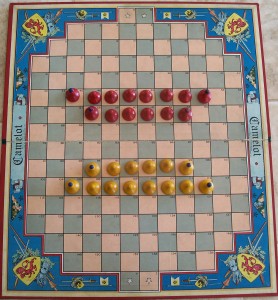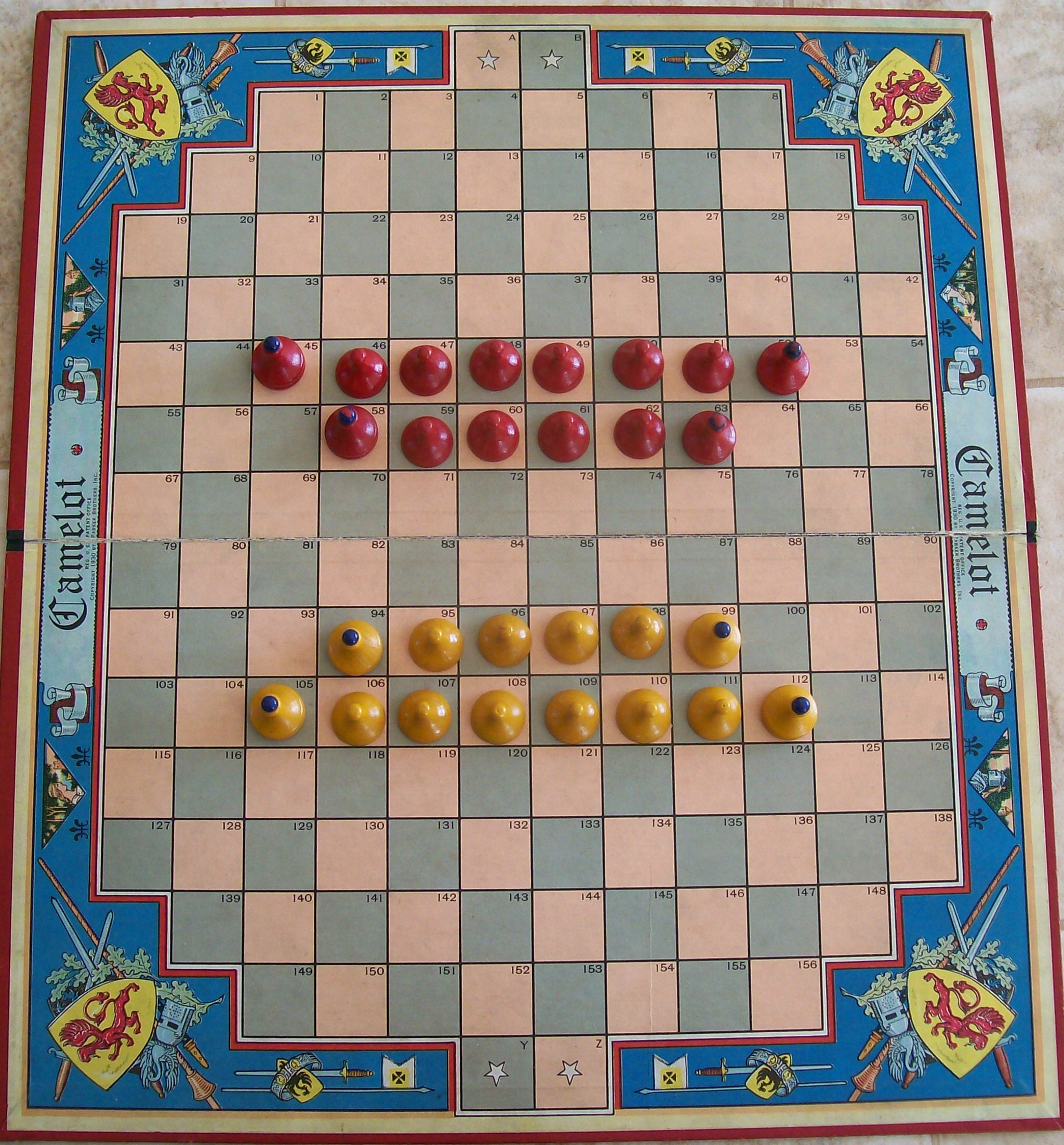Instead of playing a strategic game of chess, the 1930 Parker Brother’s game of Camelot is a great alternative for two players.

The game of Camelot was invented by George Parker. Parker, one of the brothers of the Parker Brothers Game Company, first published the highly strategic game under the name of Chivalry in 1887. Lackluster sales at that time caused the production of the game to be set aside. It was later republished in 1930 with a determined marketing plan and the new name of Camelot.
According to the book, The Game Makers (The story of Parker Brothers by Phil Orbanes), Chivalry was one of George Parker’s favorite games. His creation was considered a cross between chess and checkers. Like chess, players won completely by skill. Movement in the game was similar to checkers, but with more options. These additional freedoms required players to be constantly aware of the other player’s pieces positions. Chance in winning was not to be found between experienced gamers. The seemingly complex nature of the game was one of the reasons Parker believed it did not sell well at first.
The republishing of the game involved advertisements and scenes of popular celebrities playing the game of Camelot. It was promoted as an easily learned game with only three kinds of moves. This time around, Camelot found appreciation amongst players. Today, even though Parker Brothers discontinued the production of the game in 1968, it still has a following as seen from the Camelot website dedicated to its resurgence. Because of its past popularity, the newer board games can usually be purchased on EBay for less than 30 dollars, while the original, older ones, quite a bit more.
The game is played on a board of 160 squares. Two center squares at the base of the board on each player’s side are marked with stars. The object of the game is to be the first player to position two of his pieces in his opponent’s ‘castle’ (starred spaces). Players begin with fourteen pieces comprised of 4 knights (pieces with colored tips) and 10 men.

The three moves for the game are as follows:
- Plain move: movement by any piece in any direction
- Jump: movement by any piece in any direction which ‘jumps’ (like checkers) over an opponent’s piece. The opponent’s piece is immediately moved from board.
- Canter: movement by any piece in any direction in which a player’s pieces ‘jumps’ over his own piece. His own piece remains on the board.
Since players have two different kinds of pieces (man and knight), there is an additional movement called the Knight’s Charge. This movement is ONLY allowed by a knight piece and involves the combining of a canter and then a jump move.
Like checkers and chinese checkers, jumps or canters can be one or as many as possible. In a Knight’s Charge, it is the same. However, it must be remembered a knight canters first, and then jumps follow.
The game of Camelot is a remarkable and challenging game for two players. The following quote is taken from inside the rules booklet under the heading of Publisher’s Preface. It relates the thoughts George Parker had for the game. Many of those who have played the game would also agree on his high opinion of Camelot.
“Camelot affords the opportunity for brilliant play and great freedom of action upon a basis of moves easily learned. Camelot will be found, even when played lightly, surprising and amusing. Its real delight will come, however, when a player is sufficiently advanced to use adroitness and strategy in play.”
Camelot makes a wonderful game to add to any game cabinet; not just as a collectible to admire, but for a fascinating game to play.

I also have invented a 2-4 player chess variant
called Camelot101
Pls review it camelot101.ca and willing to give a free demo whenever your in the GTA
I have also invented a chess variant game called Camelot 101.
2-4 player chess with cards
see camelot101.ca and call me for a free demo
Where can one download a copy of the game to play p. Your phone iPad or computer
Found one called CAM for smart phone but it’s a smaller version of the proper one
Have and love the boardgame
where can I buy the camelot game? My brother and I played the game70 years ago.Thank you!
I have a 1960’s version in perfect condition. email me for details- trudy@trudyturrell.plus.com
Have you still got your Camelot game, I would be interested in buying it from you if you have. Thanks.
Carol Todd
I have the pieces and instructions, but not the board.
Pingback: Antique 1891 Game of Seven Sleepers » All About Fun and Games